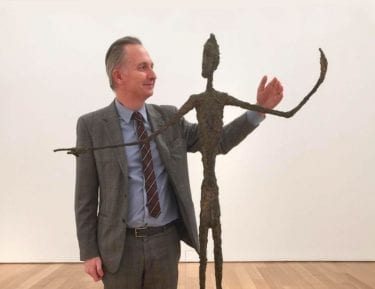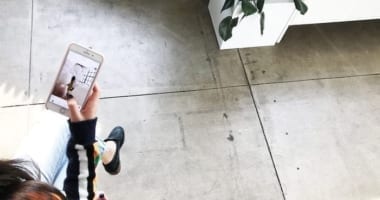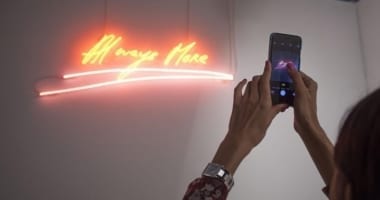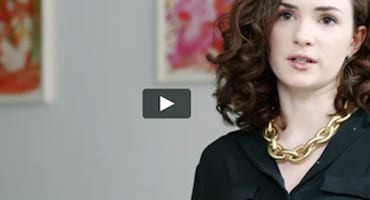“Five years ago, how did you work before Instagram? And 10 years ago, without a smartphone?” Brett Gorvy wonders aloud. A Christie’s veteran, he co-helms the Upper East Side powerhouse Lévy Gorvy Gallery—and he’s an unlikely champion of art and technology.
“There will be people who know how to utilize online systems to their advantage, and other people who will be almost drowned by the amount of information,” explains Gorvy, noting that the ease and speed of online research can be critical for closing major deals.
In an afternoon chat during Frieze week, his excitement over the impact of tech on the art world is hard to contain. Gorvy talks about accessibility with devout conviction, an attitude more reminiscent of a startup CEO than an art-world insider. He has experienced the growth of the online art world firsthand, both at Christie’s and more recently at Lévy Gorvy, and he’s jumping headfirst into the currents of change.
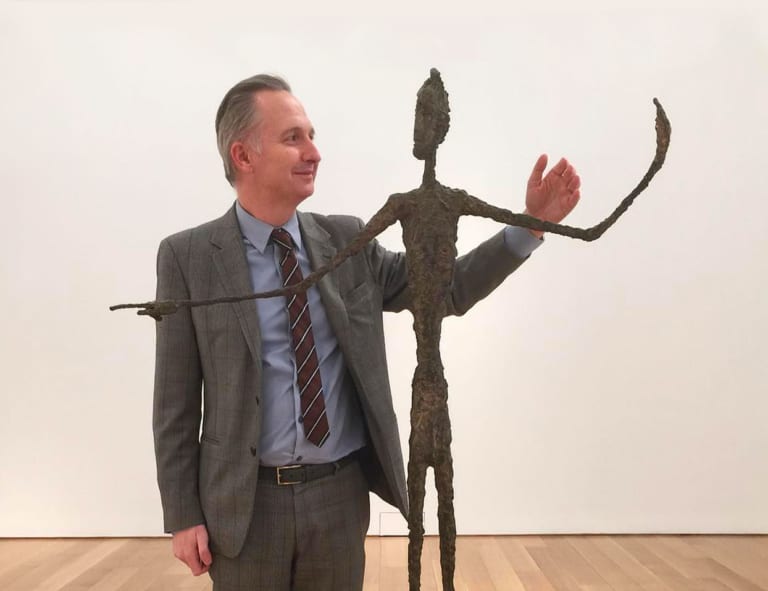
Image courtesy of @brettgorvy and Lévy Gorvy.
The Learning Curve
Gorvy holds the unofficial record for the highest-priced art sale via Instagram, having sold a $24 million Basquiat to a collector who found the work through the app in December 2016. But his engagement with the online art world goes deeper than that—he watched as the online presence of Christie’s grew from nonexistence to a substantial revenue stream.
“Through trial and error, month per month we were able to see exactly what was working and what was not working, and shape it accordingly,” recounts Gorvy. Online was a new space, and he seized the opportunity to learn and iterate on new strategies.
“The learning curve was very steep and very quickly achieved,” he says. Christie’s used inventory acquired in 2012 from the Warhol estate to test different approaches to online sales. “Any of the information which was learned was immediately channeled into the broader online sales strategy for the company.”
This methodology may not seem groundbreaking, but embracing experimentation paved the way for success. Five years after the first Warhol sale, Christie’s tops the Hiscox list for online art sales.
Bringing Auctions Online
As Christie’s brought an increasing number of sales online, the team gained a greater understanding of what made for a successful sale. One key learning was that collectors buying online still wanted guidance and support from specialists. While research and bidding could be done online, a personal connection offered reassurance.
Collectors bidding online were interested in the same type and quality of inventory as those bidding offline. However, online sales brought new collectors into the mix. Digital tools have broadened the geographical reach of auctions and allowed new collectors to participate—and they’re doing the same for galleries.
A longtime leader of the art world, Gorvy understands that physical spaces can be exclusionary. “If you walk into an auction or a gallery and you don’t belong, you might have all the money in the world but you’re not going to be on the A list.” Digital changed that, he notes, allowing new collectors a level of access that would have previously been impossible.
The New Storefront
At Lévy Gorvy, Gorvy has continued to witness the art world’s transformation. “We see digital strategy as a crucial part of what we are doing,” he says. “Online is our main store window.”
He’s focused on ensuring that the gallery is “a place that people feel is very familiar,” that makes them “want to come to our exhibitions.” One way he achieves this is by making the gallery accessible online. Lévy Gorvy uploads installation shots to their website and adds shows and artworks to their Artsy page, allowing collectors to familiarize themselves with the gallery before they set foot in the space.
The gallery has begun to commission videos for the majority of their shows, creating content that can be used for both social media and sales. They’re also hosting events that aim to engage a broad audience. Beyond the regular rotation of openings and dinners, Lévy Gorvy stages poetry readings, jazz nights, and other programming that is open to the public.
When it comes to art fairs, Gorvy notes that the gallery sends “comprehensive information” about the gallery’s booth “to anyone who we have an email for or contact with.” In the past, that would have been highly protected information—but with so many exhibitors at every fair, his aim is to “give people that information early” and ensure potential collectors visit the booth amidst the fair frenzy.

Willem de Kooning | Zao Wou-Ki. 2017. Image courtesy of Lévy Gorvy.
The Online Era
“[The] number one benefit of Artsy is the community and [the power of the] shared vision to reach people,” says Gorvy. “We’ve already seen massive growth in [the online market]…[now] it’s about people becoming more comfortable with the notion of buying in this way.”
We discuss the Skarstedt Gallery show across town and Gorvy admits he has yet to visit—but he’s “viewed every image of the Condo [online].” He sees the potential for this type of viewing: “Opportunities come from being accessible and being easy to navigate…no one has time these days to really spend hours looking for things.” In addition to seeing works in person, online offers “immediacy and [the ability] to see exhibitions, to see what’s coming up, [which collectors value].”
Gorvy himself has bought work online—he snagged an important Christopher Wool work in a sale at Wright Auctions sight unseen last year. “I was incredibly nervous until it arrived and realized I stole the piece and had the advantage over the people who would usually be bidding in the New York salesroom,” he says.
As the online art market continues to evolve, Gorvy is excited to see how both collectors and platforms adapt. He observes that, when done well, the digital just becomes an extension of the personal. While brick-and-mortars will not be disappearing any time soon, their online companions are rapidly getting better at supporting these physical spaces—and gallerists like Brett Gorvy are taking note.
